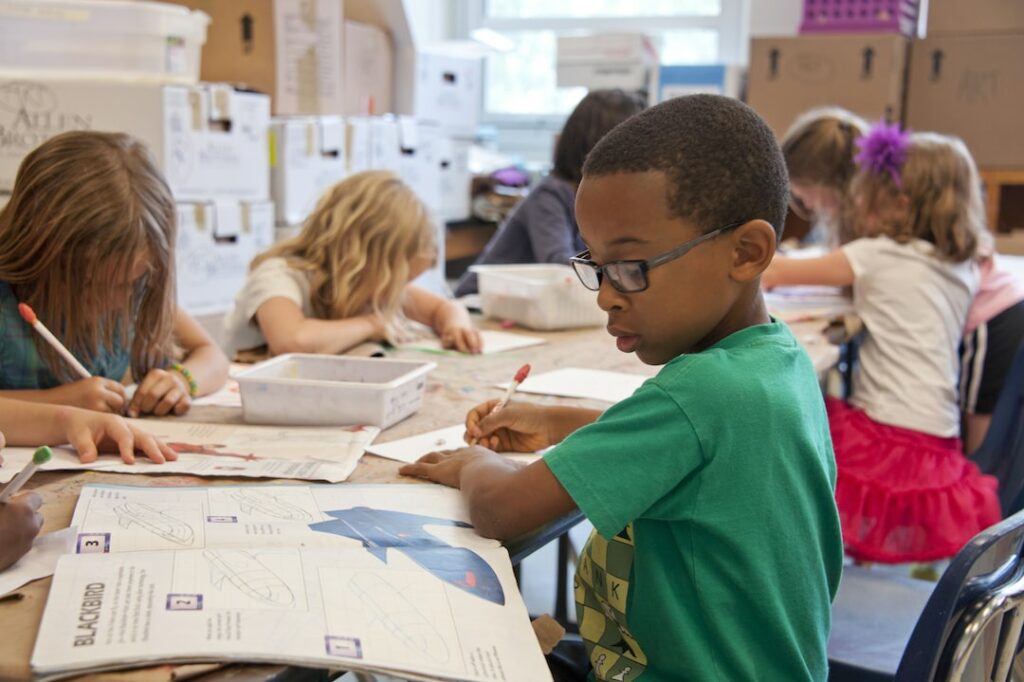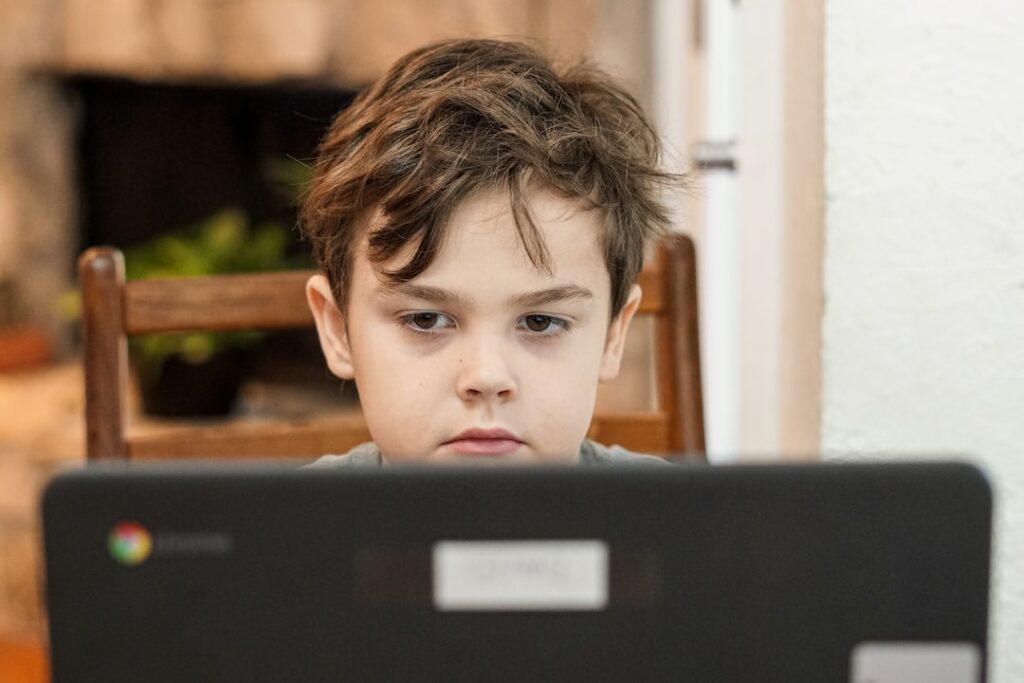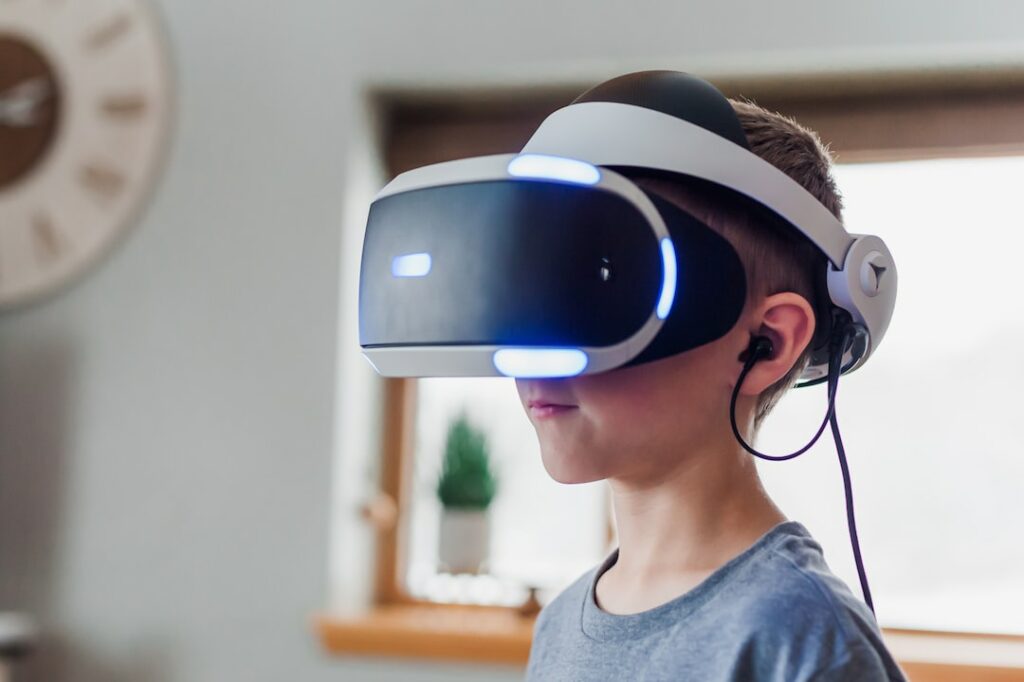How Game-Based Learning Can Help Children with Special Educational Needs
Imagine if you could transform learning into a fun, interactive game.
Gamification is an innovative approach that incorporates elements of gaming, such as rewards and competition, in learning activities in the classroom. This particular teaching strategy implements game-based elements like points, badges, and rankings to transform the educational process into a game-like experience. For students who might need a special learning environment to prosper, it can provide the opportunity to make learning accessible and less intimidating.
How exactly does game-based learning improve learning for learners with disabilities and special needs? And in what ways can we use game-based learning in a special education needs classroom? It’s a topic worthy of discussion.

Let’s explore the details of gamification and special education, its potential benefits, and how to implement it effectively for different students’ needs.
How Gamification Improved Learning in the Classroom
Implementing game-based learning interventions can help turn lessons into engaging and accessible experiences that cater to the unique learning styles of students. Teachers can use this practical tool to reach learning objectives with different types of difficulty much more easily as students are motivated to earn rewards from the games and achieve their goals. This teaching method requires some creativity and teacher training to be implemented properly, but once done nicely, can produce significant outcomes.
A study presents the types of technology that can be used for game-based learning. It shows the eight types of technologies used and how they can be used in education, such as speech recognition and 3D simulation. The study shows how technology can be used for practices in implementing game-based learning.
A case study showed that gamification does have a positive impact on students involved in game-based learning interventions. It showed positive effects on their engagement and motivation. Studies like these encourage educators to implement game-based to boost student engagement and motivate children in learning efficiently.
With gamification, the learning process becomes less about rote memorization and more about active participation. It makes learning with learners with disabilities much more fun and engaging. It also offers a variety of routes to understanding a concept, allowing students to explore and learn in a way that suits them best.
What is Special Education?
Special education is essentially ‘tailored learning environments’ placed to help students who face challenges in a typical classroom setting. It’s a way of teaching designed specifically for special education students who struggle in their studies due to certain physical, mental, or social differences.
Special education is all about adapting to the individual needs of these students. It emphasizes creating an environment where learning for learners with disabilities is made more accessible and effective. This could mean using specific teaching methods, equipment, or materials that cater to their unique learning styles and capabilities.
Children who are enrolled in special education programs are not just students with learning disabilities. They might be kids with speech, hearing, or vision impairments or even students who fall on the autism spectrum. Each of these children requires a different approach to learning. The ultimate goal is to ensure that no child is left behind and that each one has the same opportunities to succeed.
Gamification And Students With Special Needs
Believe it or not, transforming learning into a game-like experience can do wonders for kids who face unique educational challenges. This process can be a game-changer for students in the special education program. It’s not just a fun and engaging way to learn, but it also serves as an effective learning strategy that can help these students overcome their difficulties.
Implementing game-based learning can help students who have a hard time concentrating, understanding concepts, or socializing. It makes the learning experience less intimidating and more enjoyable, which can greatly improve their ability to absorb and retain information.
Moreover, game-based learning can be tailored to meet the specific needs of each student. This means that every child can learn at their own pace, in a way that works best for them. Gamification involves techniques that can help provide a unique solution to the challenges that students in special education programs often face.

How Can Game-based Learning Help Children with Special Needs?
The outcome of game-based learning has been proven significant due to its numerous benefits in education. It is a valuable tool for children to really flourish and hone their skills while at the same time providing enjoyment. It also offers several benefits that can support the learning and development of special children, such as:
1. It Helps Improve Motivation
Students with special educational needs who undertake game-based learning interventions showed a significant boost in motivation, making learning a more inviting and rewarding experience for them.
They’re encouraged to push boundaries and reach new levels, with gamification helping them see their progress in a tangible way. This fun and interactive process transforms the idea of education into a journey of discovery. It’s no longer about passing or failing; it’s about achieving and advancing.
Gamification helps make effective learning a reality for these students. By tapping into their desire for achievement and enjoyment, you’re fueling their motivation in learning.
2. It Promotes Individualized Learning
Tailoring the learning process to each student’s unique needs is indeed a powerful approach, particularly for those with learning difficulties. Gamification in special education promotes this individualized learning, making it a game-changer for learners with disabilities.
By designing and implementing game-based learning, you’re not just throwing out a one-size-fits-all curriculum. You’re creating a unique, tailored learning experience for each student. This way, you meet them where they are and help them move forward at their own pace. It promotes a healthier approach to learning among students that doesn’t stress them out.
The beauty of game-based learning is that it’s flexible and adaptable, making it a perfect tool for this kind of personalized education. Educators are not just teaching; they’re reaching out and connecting with students in a way traditional methods can’t.
3. It Improves Focus and Engagement
Gamification has the potential to unlock a classroom where every child, regardless of their unique challenges, is fully engrossed in learning. Their eyes light up with curiosity and joy as they navigate through engaging games and activities. This use of game-based learning not only improves focus and engagement but also enhances academic learning outcomes.
For students who find traditional lessons and activities not as engaging, game-based learning techniques can be a game-changer. It’s especially beneficial for kids with conditions like reading disabilities and attention deficits (ADHD), who might typically struggle to focus on tasks. They might just find that learning is no longer a chore but an exciting adventure.
4. It Helps Develops More Skills
When designing game-based learning for learners, particularly those with special needs, a key part is selecting targeted learning objectives. This refers to the specific skills you want your learners to develop.
Game-based learning involves its versatility. It’s not just about memorizing facts or figures. Instead, it allows for the enhancement of a wide range of skills, from problem-solving and critical thinking to creativity and collaboration, thereby enhancing integrated learning.
Game-based learning should be designed to focus on areas where learners need the most support, ensuring a more comprehensive skill development process.
5. Promotes Collaboration and Socialization
Game-based learning can also be a social affair, fostering collaboration and boosting interaction among learners! This social interactional learning is particularly beneficial for students who struggle with social skills.
For instance, children with autism spectrum disorder often find it challenging to engage with their peers. Educational games designed specifically for these students can encourage them to work together to achieve shared goals while also learning effectively.
This collaborative aspect gives these students a platform to practice and enhance their social skills in a safe, enjoyable environment.
6. It’s Accessible And Inclusive
One of the standout features of game-based learning is its accessibility and inclusivity. This approach is particularly beneficial for students with learning disabilities. The tailored design of game-based learning makes it adaptable to learners with certain types, ensuring everyone can participate effectively.
The interactive and engaging nature of game-based learning can play a vital role in the rehabilitation in special educational needs students. It provides an avenue for these children to learn at their own pace and in a manner that suits their unique cognitive abilities. This way, every child, regardless of their abilities, can enjoy a holistic, engaging, and beneficial experience in the classroom.
7.Encourages Self-Expression and Creativity
Game-based learning not only fosters knowledge acquisition but also encourages students to express themselves creatively. The design and implementation of game-based learning can be tailored to align learning objectives with different types of learners and the issues they face.
It allows students, especially children with autism spectrum disorder, to explore, experiment, and create in a way that may not be possible in a standard classroom setting. This encourages self-expression and creativity, giving students the freedom to learn in a way that suits them best.
All students, no matter their disability, can thrive and express their creativity while achieving their learning goals using game-based learning.
8.Easier to Give Feedback and Track Progress
Imagine the transformation when teachers have a simpler, more efficient way to provide feedback and monitor students’ progress. As a practitioner who wishes to use game-based learning with learners, you’ll find the process smoother and more beneficial. The real-time tracking and feedback options that come with game-based learning can offer a comprehensive review to assist practitioners like yourself in understanding each student’s progression.
This makes it easier for people involved in game-based learning to identify accepted practices in implementing game-based learning. You’ll be able to adjust strategies based on individual needs, further enhancing the learning experience.
Ways to Implement Gamification In Addressing the Special Educational Needs of Students
Game-based learning in the classroom of students with special educational needs is a huge task on its own. Practices in implementing game-based learning are no easy task. Teachers need to be creative to come up with fun and engaging games while also maintaining the high educational quality of the given learning content. They also need to test the games to ensure they’re working properly. Depending on the types of technology used in making these games, this task can be quite challenging.
Studies based on learners with disabilities can help provide more information toward creating accepted practices in implementing game-based.
A study included systematic reviews and meta-analyses to understand how gamification can help in the special education classroom. The study concluded that both general and domain-specific guidelines should be kept in mind for each disability category of students when implementing game-based learning.

There are numerous examples of gamification. Here are some teaching methods including game-based learning:
1. Using A Points and Reward System
In special education, a well-designed points and reward system can make a world of difference. It turns learning into a thrilling adventure that keeps students motivated and engaged.
The points and reward system is a fundamental aspect of the game-based learning process. A combination of mini games with a clear point system can give students clear goals and a tangible sense of progression, driving their desire to learn. They might feel an increased sense of accomplishment and motivation to finish tasks. This is because they can see their progress represented through points and rewards. This clear representation of hard work can help students who find finishing tasks challenging due to learning disabilities. After all, reading and writing can be much more interesting when you can see that there’s a reward, don’t you think?
2. Leveling and Progression
After understanding the importance of points and reward systems, let’s move on to another critical aspect – leveling and progression. Traditional lessons and activities may not be engaging for all students, especially those with special needs.
With leveling and progression, learning activities are transformed into intelligent educational games. These games gradually increase in difficulty, improving motor proficiency in children and keeping them engaged. This actively presents the identified learning objectives that students need to reach in a form that doesn’t intimidate them.
The beauty of this approach is that it allows for selecting learning content based on the child’s level and pace. They’re not just playing, they’re progressing, and with every level they conquer, their confidence grows.
3. Personalized Challenges
Imagine how much more exciting learning would be for your child if they got to tackle challenges tailored just for them. It offers personalized challenges that make learning and rehabilitation in special education more engaging.
Different types of technology are used, including interactive games and virtual reality, to improve proficiency in children with intellectual disabilities. These technologies allow your child to progress at their own pace, focusing on their unique strengths and needs.
4. Team-based activities
You’ll find that team-based activities are a fantastic way to enhance social interactions and collaboration among children, making learning not just an individual but a group triumph.
For special education professionals and parents, embracing game-based learning in special education can prove highly beneficial for the children they take care of. Team-based activities provide an engaging platform for children with one or more different disabilities to feel involved and successful in game-based learning interventions.
These activities foster a sense of belonging, boost self-esteem, and promote healthy competition. They also encourage children to communicate, cooperate, and learn from each other’s strengths and weaknesses.
5. Interactive Learning Apps and Tools
Consider the power of interactive learning apps and tools that can transform the way your child learns and interacts with educational content.
These technologies used in game-based learning can be a game-changer, especially for children with different disabilities who participate in game-based sessions. The application for learning and rehabilitation is vast.
Interactive learning apps and tools provide an immersive, engaging environment that makes learning fun and less intimidating. They also offer practical exercises that make complex concepts easier to grasp.
6. Narrative and Storytelling
Harnessing the power of narrative and storytelling can truly revolutionize the way your child engages with learning material. It can make complex concepts more relatable and tangible. In game-based learning, storytelling becomes a powerful tool. It is designed to cater to your child’s unique characteristics and needs.
Storytelling brings to life identified learning objectives with different game elements. It creates a compelling narrative that resonates with your child. Unlike traditional lessons and activities, which may not be engaging, gamified storytelling captivates your child’s attention. It sparks their imagination and motivation.
Gamified storytelling breathes life into the learning process. It makes it more exciting and less daunting.
7. Sensory Engagement
Imagine how much more captivating and exciting learning becomes when it engages all your child’s senses, sparking their curiosity and fueling their desire to discover and understand more.
In a case study involving children with different disabilities who participate in game-based learning, special education professionals found improvement in student performance when games were used in teaching, compared to traditional lessons and activities.
The children were not just more engaged, but they also showed better understanding and retention of the lessons. This is because the sensory component included in the games made the learning experience more vivid and memorable.
Conclusion
Gamification in special education is not just about fun and games; it is a powerful tool that may help special needs children to enjoy learning It is particularly effective for skill-based learning, providing a less intimidating environment for kids with special needs to learn. With its benefits, it may encourage parents to undertake game-based learning for their children with special needs.
It’s important to learn more about how gamification can help special education. Researchers who participate in game-based learning research are still looking for ways to further develop this innovative method of learning.
Ultimately, the goal is to foster a love for learning. With this innovative method, we can hope for a brighter future for these students.
